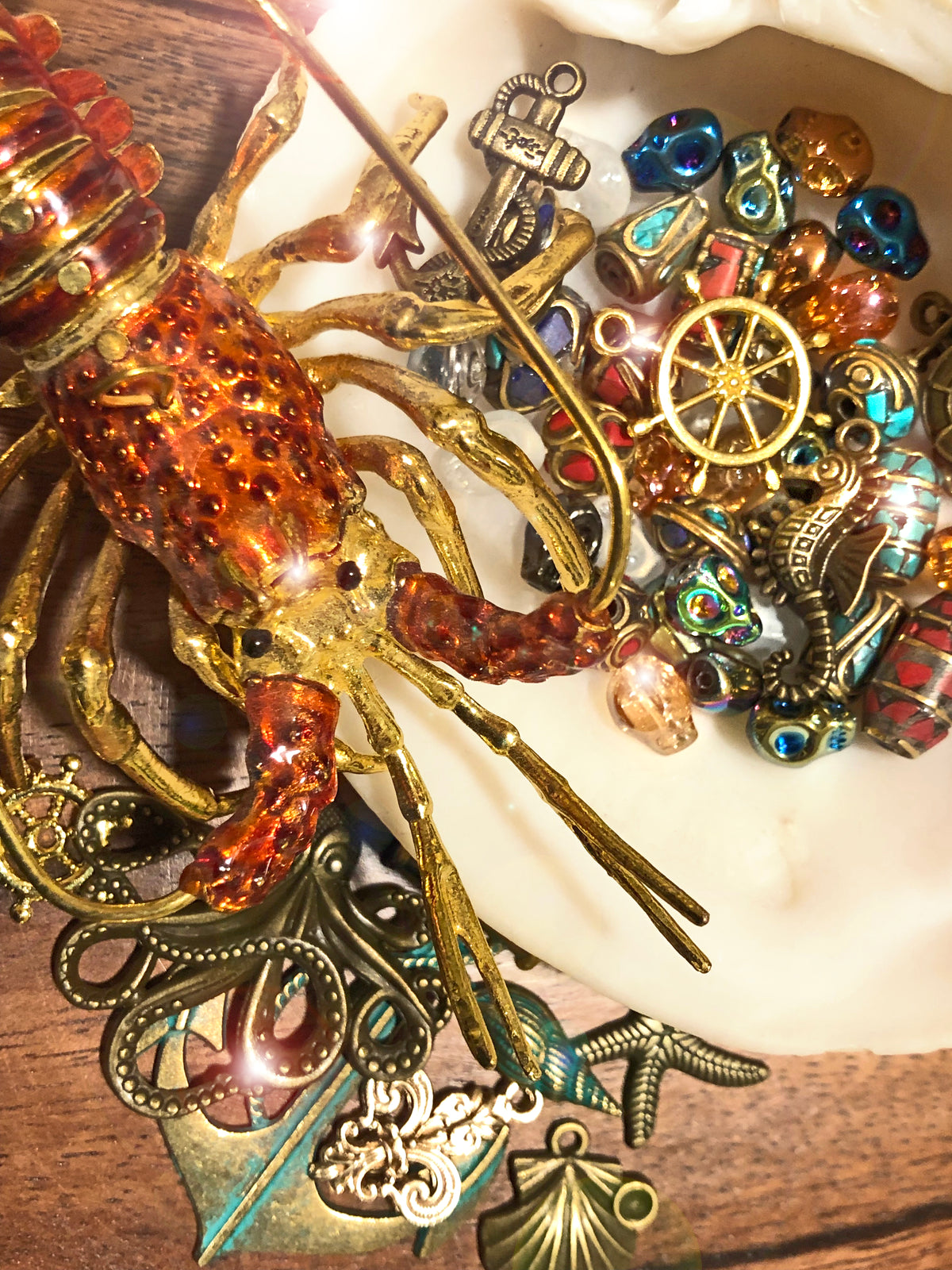PIRATE PLUNDER!


Swashbuckler Bay is a ramshackle town perched on the craggy black cliffs of Mesmer Island, just below the main volcano.
The area is rife with volcanic vents, tunnels and caves. This town and its caves offer the perfect hideouts for pirates, and their treasure!
Your sample bag came from deep inside one of these caves.
Your bag might have valuable clues inside to help determine whether this cave has been visited by pirates, and whether this cave might contain hidden treasures!
Let us know what 4 of the items are inside your bag, and you can receive a FREE "Mesmer Island, Expedition Member" pin!
What YOU might find!
Lapis Lazuli -- Fools Gold -- Sharks Teeth -- Pirate Coins -- Arrowheads -- Nautical Charms -- Exotic Beads -- Assorted Rocks & Minerals from around the World!
Lapis Lazuli
In your bag, you might find small pieces of blue Lapis Lazuli. This semi-precious stone has been used since ancient times in jewelry, sculpture, and made into blue pigments. One primary source for Lapis is northeastern Afghanistan and was brought to the rest of the world, over land and seas, along ancient, spice-trade routes.

Pieces of Lapis Lazuli, like you might find in your sample bag!

Blue Lapis Lazuli embedded into the gold death mask of Egyptian Pharaoh, Tutankhamun who died over 3,300 years ago. Lapis was rumored to be used to make Queen Cleopatra's favorite eye shadow color.

Called "The color more precious than gold." Lapis was ground into a powder to be used as a vibrant, blue pigment for paintings. This famous painting is called "The Girl with the Pearl Earring" by Vermeer.

A gold Victorian necklace with blue Lapis cabochons (oval pieces)
Fools Gold (Iron Pyrite)
In your bag, you might find small clusters of Iron Pyrite or Fools Gold. The term "Pyrite" comes from the Greek word "Pyre" or Fire, because Pyrite emits sparks when struck by metal. The reason it's called fools gold, is because it's often found in the same places as real gold, even at times mixed with gold, and has often "fooled" some into thinking they have found real gold. Chemical formula = Iron Disulfide FeS2

Pieces of Pyrite, like you might find in your sample bag!

Large pieces of pyrite have been carved throughout history to create shimmering works of art.

Pyrite has many uses, including as an additive to make amber colored glass. Amber glass is often used in things like apothecary jars as it helps block UV, Ultraviolet, Radiation, thus helping protect the contents.

Necklace made of Pyrite beads, pearls and gold.
Sharks Teeth

Above: Some of the different types of sharks teeth, like you might find in your sample bag!

Here is a drawing of some of the many types of sharks teeth. Note not all sharks have sharp pointed teeth. Sharks that have teeth that are flattened and dense, like Nurse Sharks and Angel Sharks, feed on things like bivalves (clams) and crustaceans.

What was 70 feet long, two hundred thousand pounds and could open its mouth to expose 200 - 6 in teeth in an opening large enough to swallow a pickup truck? MEGALODON! The giant prehistoric shark!

The Polynesians would use sharks teeth to make weapons. They would fashion a piece of Koa wood into the desired shape, then carve indentions into the wood to have a place to insert the base of the sharks teeth. Then they would use strong string to hold in the teeth.
Pirate Coins (Cobs, Doubloons & Pieces of Eight)
The age of Pirates lasted from the late 1500's to the early 1700's. Most of the coins plundered during this time were Spanish in origin. A common "pirate coin" is the Cob. These were not meant to be "finely minted coins" but were instead quickly cut and stamped, the main concern being the weight of the silver or gold piece. If a piece weighed too much for instance, a chunk would simply be cut off making the cob even more irregular in shape. Gold Doubloons (or Escudos) and Silver Pieces of Eight (or Reales) were a type of Spanish Cob.

Pirate Coin replicas, like you might find in your sample bag!

A couple of examples of Spanish Cob. Gold Doubloons & Silver Pieces of Eight.

"Black Sam" Bellamy was likely the "top earning" pirate of all time. He and his crew plundered 54 ships. His last ship, the Whydah, sank in a storm off the coast of Cape Cod in 1717. The ship was found in 1984. Its treasures were valued at over 100 million dollars! Black Sam, age 28 at the time, likely died with the ship.

9.36 MILLION DOLLAR Doubloon! A "Brasher Doubloon", made in 1787, is one of the most expensive coins in the world. In the early United States, most of the gold coins were still Spanish. Ephraim Brasher was the first to have the idea of minting a gold coin with the new American Seal (Eagle) on the back.


Some nautical charms & exotic beads like you might find in your sample bag!



Some arrowheads like you might find in your sample bag!


